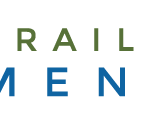Originally published in the Sustain Recovery newsletter

Co-occurring mental illnesses are complicated to treat, which makes going beyond the surface so important. Every client requires their treatment professional to look past simple explanations and stereotypes and really dig deep into the cause and effect of their issues. Your client significantly benefits when you connect the dots between their mental illnesses and addiction. Options such as exercise, yoga, and group sports offer a boost in physical health, while EMDR and prescription medications can help lower anxiety levels in those who suffer from stress. When a client is surrounded by others who understand the path they are on, it can help reduce feelings of loneliness. Group therapy and 12-Step programs provide a peer setting that can aide in feeling understood. Family therapy affords a client the ability to see their healing as a family project, resulting in higher self-esteem.
Have you heard about the four A’s? Awareness, Advocacy, Accessibility, and Action are four ways to help spread the word about co-occurring mental illnesses to sufferers, their loved ones, and others in their communities. Spreading awareness helps educate people who do not understand the definitions of mental illnesses and how many people suffer from them. Advocating for things like action within your area or passing national legislation helps your clients take advantage of opportunities not otherwise afforded them. Providing for more accessibility to the most vulnerable populations increases their ability to get the help they need. Too often, financial limits and rural locations hinder sufferers’ ability to get treatment. Action can include anything from helping one person who needs a cheerleader in their corner to volunteering in a setting that helps many. Teaching your clients about the four A’s can help bolster their confidence and hope for their futures.
The 1970s first brought about a real recognition of how often mental illness and addiction are linked together. Co-occurring mental illnesses are common in many clients, which means you have to stay up-to-date on the evolving avenues of treatment for them. Increased public awareness of mental health issues helps open up new avenues for treatment. The DSM is also updated regularly to keep up with recent advances and redefine some conditions or terms. Today’s treatment professional can choose from a host of options for their clients, ranging from individual therapy to outpatient or residential treatment. As newer modalities arise, you have a more extensive range of suggestions for them. Legislation such as the Americans with Disabilities Act and the Affordable Care Act also come into play, leveling the playing field for those previously left with few choices for managing their mental health.













